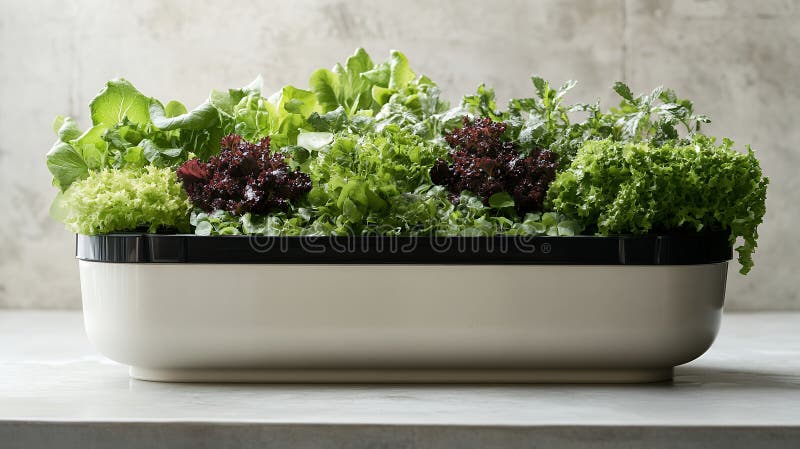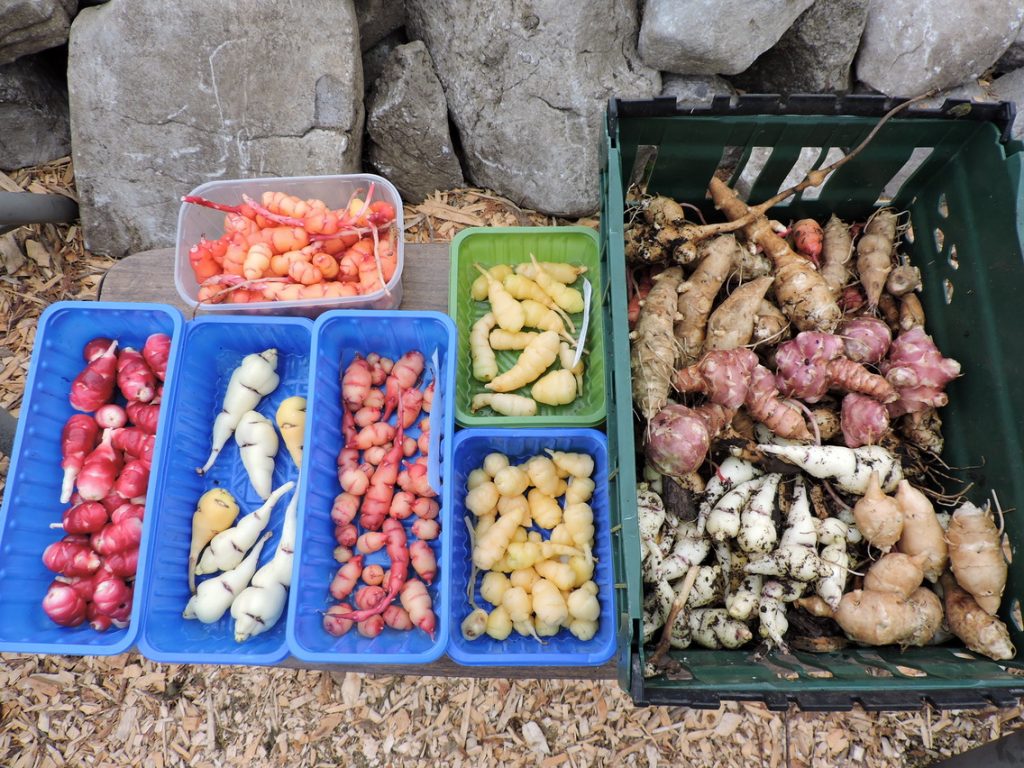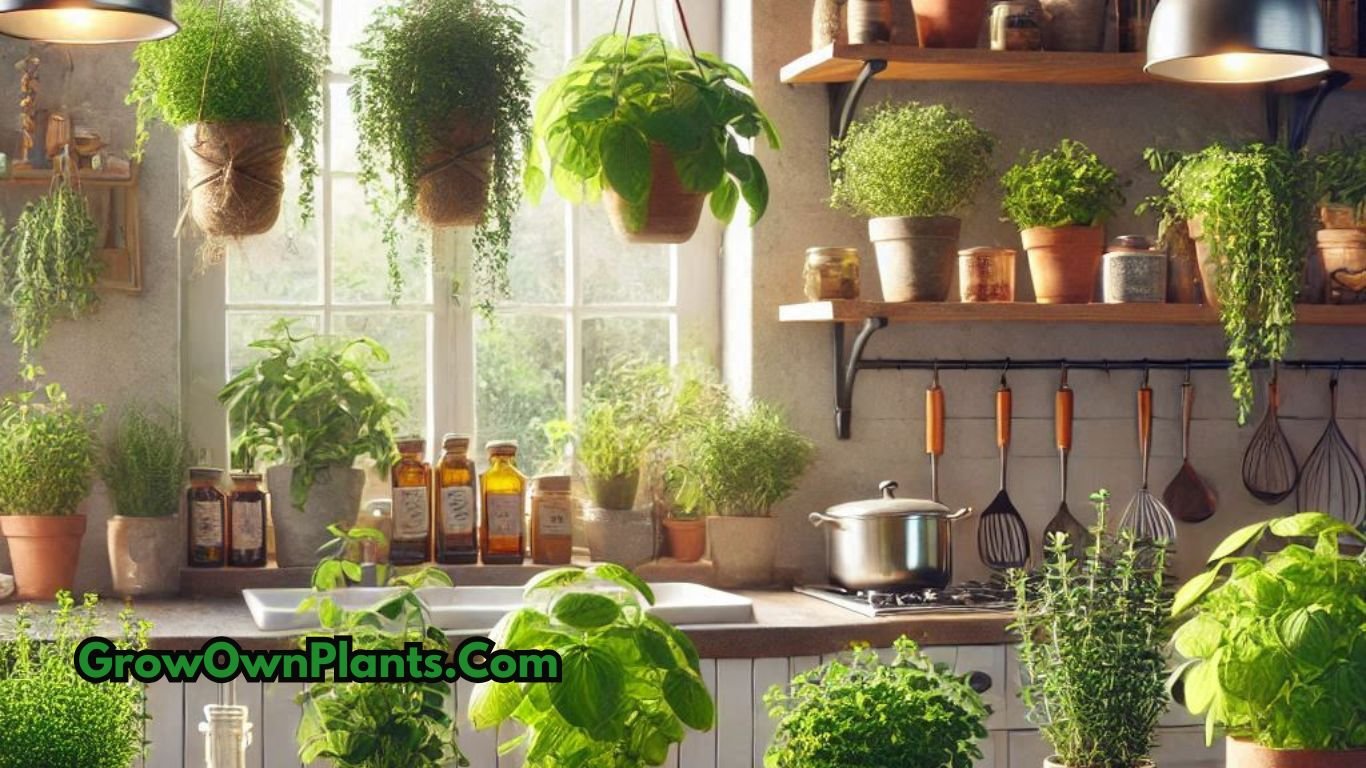
Introduction: The Rise of Indoor Gardening
In an increasingly urbanized world, the desire to connect with nature remains deeply ingrained within us. The allure of fresh, organic produce, coupled with concerns about food miles and environmental impact, has fueled a surge in interest in indoor gardening. Among the most rewarding and accessible forms of indoor cultivation is growing organic leafy greens. Imagine stepping into your kitchen and harvesting a vibrant salad, bursting with flavor and nutrients, all grown within the comfort of your home. This isn’t a futuristic fantasy; it’s a tangible reality for many, and with the right knowledge and techniques, it can be for you too.
This comprehensive guide will take you through every step of the process, from selecting the right greens and setting up your indoor garden to troubleshooting common problems and enjoying the fruits (or rather, leaves) of your labor. Whether you’re a seasoned gardener looking to expand your horizons or a complete novice with a yearning for homegrown goodness, this guide will provide you with the knowledge and confidence to cultivate a thriving indoor garden of organic leafy greens.
Why Grow Leafy Greens Indoors? The Benefits Beyond Freshness
Growing your own food, especially indoors, offers a multitude of advantages that extend far beyond simply having fresh ingredients readily available. Let’s delve into some of the key benefits:
1. Year-Round Availability: Defying the Seasons
One of the most significant advantages of indoor gardening is its independence from seasonal constraints. You’re no longer at the mercy of weather patterns or limited growing seasons. Enjoy a continuous supply of your favorite leafy greens, regardless of whether it’s the dead of winter or the scorching heat of summer. This consistent availability allows you to incorporate fresh, healthy greens into your diet year-round.
2. Superior Freshness and Nutritional Value: From Garden to Table
Leafy greens begin to lose their nutritional value as soon as they’re harvested. The longer the time between harvest and consumption, the greater the nutrient loss. By growing your own greens indoors, you can harvest them just moments before you eat them, maximizing their freshness and nutritional content. This ‘garden-to-table’ approach ensures that you’re getting the most vitamins, minerals, and antioxidants from your leafy greens.
3. Organic and Chemical-Free: Control Over Your Food Supply
When you grow your own greens, you have complete control over the inputs. You can choose to grow organically, avoiding the use of synthetic pesticides, herbicides, and fertilizers. This allows you to enjoy healthy, chemical-free produce that you can feel good about feeding yourself and your family. Knowing exactly what goes into your food is a powerful advantage in today’s world.
4. Space Efficiency: Urban Gardening Solutions
Indoor gardening is particularly well-suited for urban dwellers with limited outdoor space. You don’t need a sprawling backyard to grow a substantial amount of leafy greens. Vertical gardens, container gardening, and hydroponic systems can all be adapted to fit into small apartments, balconies, or even a sunny windowsill. This makes fresh, homegrown produce accessible to anyone, regardless of their living situation.
5. Therapeutic Benefits: Gardening for Well-being
Gardening has been shown to have numerous therapeutic benefits, including reducing stress, improving mood, and promoting a sense of well-being. The act of nurturing plants, watching them grow, and harvesting your own food can be incredibly rewarding and fulfilling. Indoor gardening provides a convenient and accessible way to experience these benefits, even in the midst of a busy urban life. The simple act of tending to your indoor garden can be a calming and grounding experience, offering a much-needed respite from the stresses of daily life.
6. Cost Savings: Investing in Your Health
While there is an initial investment required to set up your indoor garden, you can save money in the long run by growing your own leafy greens. The cost of organic produce at the grocery store can be significant, and by growing your own, you can eliminate this expense. Moreover, you’re investing in your health by consuming fresh, nutritious food that can help prevent disease and improve overall well-being.
Choosing the Right Leafy Greens: A Variety of Flavors and Textures
The world of leafy greens is vast and diverse, offering a wide range of flavors, textures, and nutritional profiles. Here are some of the most popular and easy-to-grow options for indoor gardening:
1. Lettuce: The Versatile Staple
Lettuce is a classic choice for indoor gardening, thanks to its ease of cultivation and quick growth rate. There are many different varieties to choose from, including:
- Loose-leaf lettuce: This type of lettuce doesn’t form a head, and you can harvest individual leaves as needed. Popular varieties include Black Seeded Simpson, Red Sails, and Oak Leaf.
- Butterhead lettuce: Known for its soft, buttery texture and mild flavor. Boston and Bibb are popular butterhead varieties.
- Romaine lettuce: A staple for Caesar salads, romaine lettuce has a crisp texture and slightly bitter flavor.
- Crisphead lettuce: Also known as iceberg lettuce, this type is more challenging to grow indoors but can be done with proper lighting and temperature control.
2. Spinach: The Nutritional Powerhouse
Spinach is packed with vitamins, minerals, and antioxidants, making it a nutritional powerhouse. It’s relatively easy to grow indoors and can be harvested multiple times. Choose varieties like Bloomsdale Long Standing or Tyee for best results.
3. Kale: The Hardy Superfood
Kale is another nutrient-rich leafy green that is well-suited for indoor growing. It’s known for its hardiness and ability to tolerate cooler temperatures. Popular varieties include Lacinato (Dinosaur) kale, Curly kale, and Red Russian kale.
4. Arugula (Rocket): The Peppery Delight
Arugula, also known as rocket, has a distinctive peppery flavor that adds a delightful kick to salads and other dishes. It’s a fast-growing green that is easy to cultivate indoors.
5. Mustard Greens: The Spicy Zest
Mustard greens offer a spicy, pungent flavor that adds zest to salads, stir-fries, and other dishes. They are relatively easy to grow indoors and come in a variety of colors and textures.
6. Swiss Chard: The Colorful Beauty
Swiss chard is a visually appealing leafy green with colorful stems and broad leaves. It’s packed with nutrients and has a mild, earthy flavor. Varieties like Bright Lights are particularly attractive.
7. Microgreens: The Tiny Nutritional Bombs
Microgreens are young seedlings of various vegetables and herbs, harvested when they are just a few inches tall. They are incredibly nutritious and offer a concentrated burst of flavor. Popular microgreen options include radish, broccoli, sunflower, and pea shoots. Microgreens are exceptionally easy to grow indoors, often requiring only a shallow tray, soil, and adequate light.
Setting Up Your Indoor Garden: Creating the Ideal Environment
To successfully grow organic leafy greens indoors, you need to create an environment that mimics their natural growing conditions. Here are the key factors to consider:
1. Lighting: The Lifeblood of Your Garden
Light is essential for photosynthesis, the process by which plants convert light energy into chemical energy. Leafy greens require adequate light to thrive. Natural light from a sunny window can be sufficient for some greens, but supplemental lighting is often necessary, especially during the winter months or in areas with limited sunlight. Artificial lights also allow you to have more control over the light cycle, optimizing growth. Here are some lighting options:
- LED Grow Lights: LEDs are energy-efficient, long-lasting, and produce very little heat. They are an excellent choice for indoor gardening and come in a variety of spectrums to suit different plant needs. Full-spectrum LEDs are generally recommended for leafy greens.
- Fluorescent Grow Lights: Fluorescent lights are another affordable option for indoor gardening. T5 fluorescent bulbs are particularly popular for growing leafy greens.
- Incandescent Lights: While incandescent lights are the least expensive option, they are also the least efficient and produce a lot of heat, which can damage plants. They are not recommended for indoor gardening.
The amount of light your leafy greens need will depend on the specific variety. Generally, leafy greens require 12-16 hours of light per day. Use a timer to automate the lighting cycle and ensure consistent light exposure.
2. Temperature: Maintaining a Comfortable Climate
Leafy greens generally prefer cooler temperatures, between 60-70°F (15-21°C). Avoid placing your plants near heat sources or drafts. Consistent temperature is key to preventing bolting (premature flowering) in some leafy greens like lettuce.
3. Humidity: Creating a Moist Environment
Leafy greens thrive in humid environments. Aim for a humidity level of 40-60%. You can increase humidity by using a humidifier, placing a tray of water near your plants, or grouping plants together.
4. Air Circulation: Preventing Disease
Good air circulation is essential for preventing fungal diseases and other problems. Use a small fan to gently circulate the air around your plants. Avoid overcrowding your plants, as this can restrict airflow.
5. Growing Medium: Choosing the Right Foundation
The growing medium provides support for your plants and delivers essential nutrients and water to their roots. Here are some options for growing leafy greens indoors:
- Potting Soil: A well-draining potting mix is a good choice for container gardening. Choose an organic potting mix that is specifically formulated for vegetables.
- Soilless Mix: Soilless mixes, such as peat moss, vermiculite, and perlite, are lightweight and provide excellent drainage. They are a good option for hydroponic systems.
- Hydroponics: Hydroponics is a method of growing plants without soil, using a nutrient-rich water solution. Hydroponic systems can be very efficient and productive, but they require more initial investment and technical knowledge.
Planting and Growing: Nurturing Your Indoor Garden
Once you’ve set up your indoor garden, it’s time to plant your leafy greens. You can start from seeds or purchase seedlings from a nursery. Starting from seeds gives you more control over the varieties you grow, but it requires more time and effort.
1. Starting from Seeds: Nurturing New Life
To start seeds indoors, you’ll need a seed-starting tray, seed-starting mix, and a heat mat (optional). Sow the seeds according to the package directions, and keep the soil moist but not soggy. Place the tray on a heat mat to speed up germination. Once the seedlings emerge, provide them with plenty of light.
2. Transplanting Seedlings: Giving Them Room to Grow
Once the seedlings have developed a few sets of true leaves, they can be transplanted into larger containers or directly into your garden bed. Handle the seedlings gently to avoid damaging their delicate roots. Space the plants according to the package directions.
3. Watering: Maintaining the Right Moisture Balance
Water your leafy greens regularly, keeping the soil consistently moist but not soggy. Avoid overwatering, as this can lead to root rot. Water in the morning to allow the foliage to dry before nightfall, which can help prevent fungal diseases. The amount of water your plants need will depend on the temperature, humidity, and type of growing medium.
4. Fertilizing: Providing Essential Nutrients
Leafy greens require regular fertilization to thrive. Use an organic fertilizer that is specifically formulated for vegetables. Follow the package directions carefully to avoid over-fertilizing, which can burn the plants. Liquid fertilizers are easy to apply and are quickly absorbed by the plants.
5. Pest and Disease Control: Protecting Your Harvest
Even in an indoor environment, your leafy greens can be susceptible to pests and diseases. Regularly inspect your plants for signs of problems. Common pests include aphids, spider mites, and whiteflies. Control pests by handpicking them off the plants, using insecticidal soap, or introducing beneficial insects like ladybugs. Prevent diseases by providing good air circulation, avoiding overwatering, and using a disease-resistant growing medium.
Harvesting and Enjoying: The Rewards of Your Labor
One of the most rewarding aspects of growing your own leafy greens is harvesting and enjoying the fruits (or rather, leaves) of your labor. Harvest your leafy greens when they are young and tender. You can harvest individual leaves as needed, or you can harvest the entire plant at once. To harvest individual leaves, simply snip them off near the base of the plant. To harvest the entire plant, cut it off at the soil line.
Wash your leafy greens thoroughly before eating them. They can be eaten raw in salads, sandwiches, and wraps, or they can be cooked in stir-fries, soups, and stews. Experiment with different recipes and enjoy the fresh, delicious flavor of your homegrown leafy greens!
Troubleshooting: Addressing Common Problems
Even with the best care, you may encounter some problems when growing leafy greens indoors. Here are some common issues and how to address them:
1. Leggy Growth: Insufficient Light
If your leafy greens are growing tall and spindly with long stems, it’s likely that they’re not getting enough light. Provide them with more light by moving them to a sunnier location or adding supplemental lighting.
2. Yellowing Leaves: Nutrient Deficiency
Yellowing leaves can indicate a nutrient deficiency. Fertilize your plants with an organic fertilizer that is specifically formulated for vegetables.
3. Wilting Leaves: Overwatering or Underwatering
Wilting leaves can be caused by either overwatering or underwatering. Check the soil moisture to determine the cause. If the soil is soggy, reduce watering. If the soil is dry, increase watering.
4. Pest Infestations: Identifying and Eradicating
Inspect your plants regularly for signs of pests. Control pests by handpicking them off the plants, using insecticidal soap, or introducing beneficial insects.
5. Disease Problems: Prevention and Treatment
Prevent diseases by providing good air circulation, avoiding overwatering, and using a disease-resistant growing medium. If your plants develop a disease, remove the affected leaves and treat the plants with an organic fungicide.
Advanced Techniques: Taking Your Indoor Garden to the Next Level
Once you’ve mastered the basics of growing leafy greens indoors, you can explore some advanced techniques to further enhance your garden:
1. Succession Planting: Continuous Harvests
Succession planting involves planting new seeds every few weeks to ensure a continuous harvest. This technique is particularly useful for leafy greens that have a short growing season.
2. Vertical Gardening: Maximizing Space
Vertical gardening is a great way to maximize space in a small indoor garden. Use vertical planters, hanging baskets, or wall-mounted trellises to grow your leafy greens.
3. Hydroponics: Soil-Free Growing
Hydroponics is a method of growing plants without soil, using a nutrient-rich water solution. Hydroponic systems can be very efficient and productive, but they require more initial investment and technical knowledge.
4. Aquaponics: Combining Fish and Plants
Aquaponics is a system that combines aquaculture (raising fish) and hydroponics. The fish waste provides nutrients for the plants, and the plants filter the water for the fish. Aquaponics is a sustainable and efficient way to grow food indoors.
Conclusion: Embrace the Joy of Indoor Gardening
Growing organic leafy greens indoors is a rewarding and accessible way to connect with nature, enjoy fresh, healthy produce, and improve your overall well-being. With the right knowledge and techniques, you can create a thriving indoor garden that provides you with a continuous supply of delicious and nutritious greens, regardless of the season or your living situation. So, embrace the joy of indoor gardening and experience the satisfaction of growing your own food!
Start small, experiment with different varieties, and don’t be afraid to make mistakes. Gardening is a learning process, and with each growing season, you’ll gain more knowledge and experience. Soon, you’ll be harvesting a bountiful crop of organic leafy greens and enjoying the many benefits of indoor gardening.
The journey of growing your own food is not just about the produce; it’s about the connection to nature, the satisfaction of nurturing life, and the empowerment of knowing where your food comes from. So, grab your seeds, prepare your soil, and embark on the adventure of growing your own organic leafy greens indoors. Your taste buds, your health, and your soul will thank you for it.


